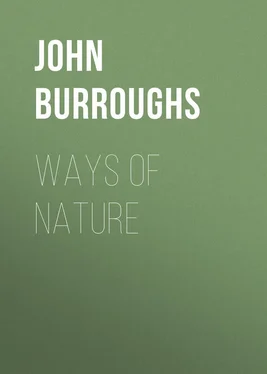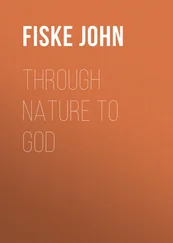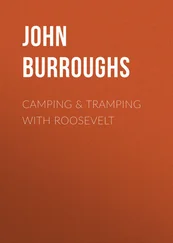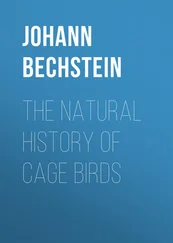John Burroughs - Ways of Nature
Здесь есть возможность читать онлайн «John Burroughs - Ways of Nature» — ознакомительный отрывок электронной книги совершенно бесплатно, а после прочтения отрывка купить полную версию. В некоторых случаях можно слушать аудио, скачать через торрент в формате fb2 и присутствует краткое содержание. Жанр: foreign_antique, foreign_prose, на английском языке. Описание произведения, (предисловие) а так же отзывы посетителей доступны на портале библиотеки ЛибКат.
- Название:Ways of Nature
- Автор:
- Жанр:
- Год:неизвестен
- ISBN:нет данных
- Рейтинг книги:3 / 5. Голосов: 1
-
Избранное:Добавить в избранное
- Отзывы:
-
Ваша оценка:
- 60
- 1
- 2
- 3
- 4
- 5
Ways of Nature: краткое содержание, описание и аннотация
Предлагаем к чтению аннотацию, описание, краткое содержание или предисловие (зависит от того, что написал сам автор книги «Ways of Nature»). Если вы не нашли необходимую информацию о книге — напишите в комментариях, мы постараемся отыскать её.
Ways of Nature — читать онлайн ознакомительный отрывок
Ниже представлен текст книги, разбитый по страницам. Система сохранения места последней прочитанной страницы, позволяет с удобством читать онлайн бесплатно книгу «Ways of Nature», без необходимости каждый раз заново искать на чём Вы остановились. Поставьте закладку, и сможете в любой момент перейти на страницу, на которой закончили чтение.
Интервал:
Закладка:
Probably in a state of wild nature birds never make mistakes, but where they come in contact with our civilization and are confronted by new conditions, they very naturally make mistakes. For instance, their cunning in nest-building sometimes deserts them. The art of the bird is to conceal its nest both as to position and as to material, but now and then it is betrayed into weaving into its structure showy and bizarre bits of this or that, which give its secret away, and which seem to violate all the traditions of its kind. I have the picture of a robin's nest before me, upon the outside of which are stuck a muslin flower, a leaf from a small calendar, and a photograph of a local celebrity. A more incongruous use of material in bird architecture it would be hard to find. I have been told of another robin's nest upon the outside of which the bird had fastened a wooden label from a near-by flower-bed, marked "Wake Robin." Still another nest I have seen built upon a large, showy foundation of the paper-like flowers of antennaria, or everlasting. The wood thrush frequently weaves a fragment of newspaper or a white rag into the foundation of its nest. "Evil communications corrupt good manners." The newspaper and the rag-bag unsettle the wits of the birds. The phœbe-bird is capable of this kind of mistake or indiscretion. All the past generations of her tribe have built upon natural and, therefore, neutral sites, usually under shelving and overhanging rocks, and the art of adapting the nest to its surroundings, blending it with them, has been highly developed. But phœbe now frequently builds under our sheds and porches, where, so far as concealment is concerned, a change of material, say from moss to dry grass or shreds of bark, would be an advantage to her; but she departs not a bit from the family traditions; she uses the same woodsy mosses, which in some cases, especially when the nest is placed upon newly sawed timber, make her secret an open one to all eyes.
It does indeed often look as if the birds had very little sense. Think of a bluebird, or an oriole, or a robin, or a jay, fighting for hours at a time its own image as reflected in a pane of glass; quite exhausting itself in its fury to demolish its supposed rival! Yet I have often witnessed this little comedy. It is another instance of how the arts of our civilization corrupt and confuse the birds. It may be that in the course of many generations the knowledge of glass will get into their blood, and they will cease to be fooled by it, as they may also in time learn what a poor foundation the newspaper is to build upon. The ant or the bee could not be fooled by the glass in that way for a moment.
Have the birds and our other wild neighbors sense, as distinguished from instinct? Is a change of habits to meet new conditions, or the taking advantage of accidental circumstances, an evidence of sense? How many birds appear to have taken advantage of the protection afforded by man in building their nests! How many of them build near paths and along roadsides, to say nothing of those that come close to our dwellings! Even the quail seems to prefer the borders of the highway to the open fields. I have chanced upon only three quails' nests, and these were all by the roadside. One season a scarlet tanager that had failed with her first nest in the woods came to try again in a little cherry tree that stood in the open, a few feet from my cabin, where I could almost touch the nest with my hand as I passed. But in my absence she again came to grief, some marauder, probably a red squirrel, taking her eggs. Will her failure in this case cause her to lose faith in the protective influence of the shadow of a human dwelling? I hope not. I have known the turtle dove to make a similar move, occupying an old robin's nest near my neighbor's cottage. The timid rabbit will sometimes come up from the bushy fields and excavate a place for her nest in the lawn a few feet from the house. All such things look like acts of judgment, though they may be only the result of a greater fear overcoming a lesser fear.
It is in the preservation of their lives and of their young that the wild creatures come the nearest to showing what we call sense or reason. The boys tell me that a rabbit that has been driven from her hole a couple of times by a ferret will not again run into it when pursued. The tragedy of a rabbit pursued by a mink or a weasel may often be read upon our winter snows. The rabbit does not take to her hole; it would be fatal. And yet, though capable of far greater speed, so far as I have observed, she does not escape the mink; he very soon pulls her down. It would look as though a fatal paralysis, the paralysis of utter fear, fell upon the poor creature as soon as she found herself hunted by this subtle, bloodthirsty enemy. I have seen upon the snow where her jumps had become shorter and shorter, with tufts of fur marking each stride, till the bloodstains, and then her half-devoured body, told the whole tragic story.
There is probably nothing in human experience, at this age of the world, that is like the helpless terror that seizes the rabbits as it does other of our lesser wild creatures, when pursued by any of the weasel tribe. They seem instantly to be under some fatal spell which binds their feet and destroys their will power. It would seem as if a certain phase of nature from which we get our notions of fate and cruelty had taken form in the weasel.
The rabbit, when pursued by the fox or by the dog, quickly takes to hole. Hence, perhaps, the wit of the fox that a hunter told me about. The story was all written upon the snow. A mink was hunting a rabbit, and the fox, happening along, evidently took in the situation at a glance. He secreted himself behind a tree or a rock, and, as the rabbit came along, swept her from her course like a charge of shot fired at close range, hurling her several feet over the snow, and then seizing her and carrying her to his den up the mountain-side.
It would be interesting to know how long our chimney swifts saw the open chimney-stacks of the early settlers beneath them before they abandoned the hollow trees in the woods and entered the chimneys for nesting and roosting purposes. Was the act an act of judgment, or simply an unreasoning impulse, like so much else in the lives of the wild creatures?
In the choice of nesting-material the swift shows no change of habit. She still snips off the small dry twigs from the tree-tops and glues them together, and to the side of the chimney, with her own glue. The soot is a new obstacle in her way, that she does not yet seem to have learned to overcome, as the rains often loosen it and cause her nest to fall to the bottom. She has a pretty way of trying to frighten you off when your head suddenly darkens the opening above her. At such times she leaves the nest and clings to the side of the chimney near it. Then, slowly raising her wings, she suddenly springs out from the wall and back again, making as loud a drumming with them in the passage as she is capable of. If this does not frighten you away, she repeats it three or four times. If your face still hovers above her, she remains quiet and watches you.
What a creature of the air this bird is, never touching the ground, so far as I know, and never tasting earthly food! The swallow does perch now and then and descend to the ground for nesting-material; but the swift, I have reason to believe, even outrides the summer storms, facing them on steady wing, high in air. The twigs for her nest she gathers on the wing, sweeping along like children on a "merry-go-round" who try to seize a ring, or to do some other feat, as they pass a given point. If the swift misses the twig, or it fails to yield to her the first time, she tries again and again, each time making a wider circuit, as if to tame and train her steed a little and bring him up more squarely to the mark next time.
Читать дальшеИнтервал:
Закладка:
Похожие книги на «Ways of Nature»
Представляем Вашему вниманию похожие книги на «Ways of Nature» списком для выбора. Мы отобрали схожую по названию и смыслу литературу в надежде предоставить читателям больше вариантов отыскать новые, интересные, ещё непрочитанные произведения.
Обсуждение, отзывы о книге «Ways of Nature» и просто собственные мнения читателей. Оставьте ваши комментарии, напишите, что Вы думаете о произведении, его смысле или главных героях. Укажите что конкретно понравилось, а что нет, и почему Вы так считаете.












